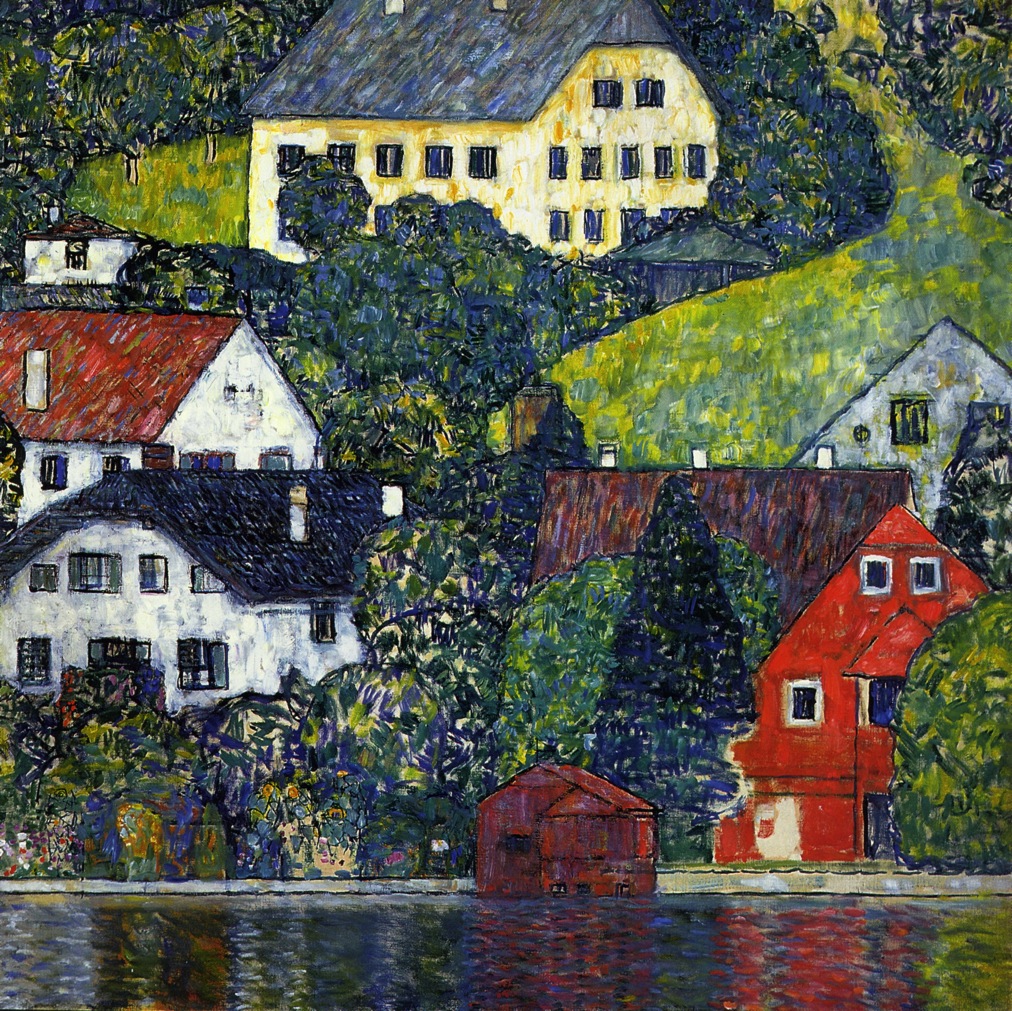art-Klimt.com
Gustav Klimt 1862-1918
Gustav Klimt - Houses at Unterach on the Attersee 1916
 Houses at Unterach on the Attersee |
From Christie's :
As an artist, Klimt always kept an eye open to the advances in art that were happening around him. He would allow these to influence him, yet he retained his own idiosyncratic style at the core. He would take the merest shards of the stylistic developments of the artists of the period, turning them to his own purposes. In Houses in Unterach on the Attersee, a thousand influences are blended together, and yet the result is unquestionably a painting that sings with Klimt's unique vision.
One of the most interesting and immediately evident influences in Houses in Unterach on the Attersee is that of Klimt's own protégé, Egon Schiele (Fig. 1). This prodigy of an artist had been largely promoted and protected by Klimt, and had himself absorbed the older artist's influence. Yet as Schiele matured, this became a two-way process, as is evident most of all in his flattened townscapes such as the present work and Church in Unterach on the Attersee of 1916 (Fig. 2). In the deliberately restricted perspective of the scene, the jumbled houses and the textured surface, this picture recalls the landscapes that Schiele had been painting, especially those from the previous half decade. Even the frantic, almost psychotic tension so peculiar to Schiele's paintings haunts this work, not least in its tight and restrictive composition. Although the colors themselves are bright and joyous in Houses in Unterach on the Attersee, the crowded character of this painting reflects a more complex emotional core than the peaceful, earlier landscapes. This picture is tinged with melancholy and anxiety, reflecting the fact that it was completed while the world was at war-- peace, even in a summer resort on the Attersee, was an illusion.